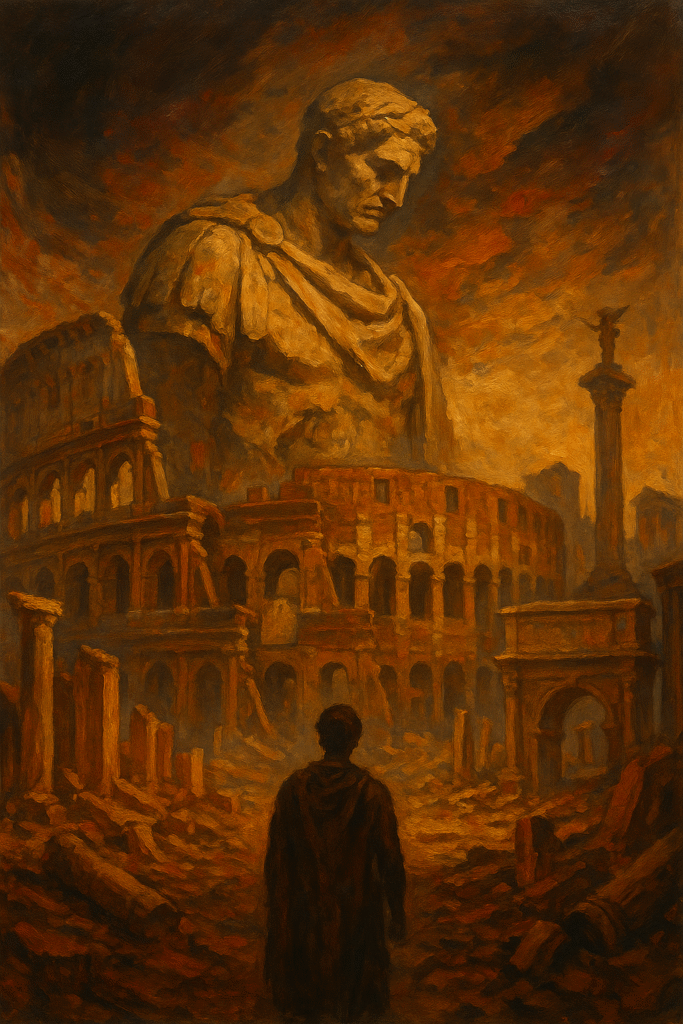Understanding the fall of the Roman Empire requires exploring multiple interrelated factors, including political corruption, economic strife, and external invasions, which cumulatively led to its collapse. This article dives deep into these reasons, examines pivotal events, and reflects on lessons applicable today.
Understanding the Fall: An Overview of the Roman Empire
The Roman Empire was a formidable power, known for its vast territorial expansion, advanced engineering, and cultural influences spanning continents. At its peak, it governed territories from Britain to the Middle East, boasting unparalleled architectural and societal achievements. Yet, its downfall highlights the fragility of even the mightiest of powers.
The Ancient History of Rome: A Glimpse into Greatness
Rome’s achievements include monumental structures such as the Colosseum, widespread adoption of Latin, and contributions to legal systems. The empire’s expansion, marked by notable military conquests and commerce, significantly influenced Europe and the world. However, internal challenges soon emerged.
Unraveling the Causes of Roman Empire Decline
The decline of the Roman Empire can be attributed to numerous complex factors, including political corruption, economic difficulties, and relentless foreign invasions.
Economic Factors in Rome’s Downfall
Multiple economic issues contributed to Rome’s demise, including rampant inflation, disrupted trade routes, and declining agricultural productivity.
* Inflation: Over-minting of currency led to devaluation.
* Trade Routes: Insecurity from invasions complicated trade.
* Agricultural Issues: Poor harvests reduced food supply.
Creating synoptic charts of these factors showcases their interconnectedness over time.
Notable Events Leading to the Fall of Rome
Several key battles and invasions marked the empire’s decline, culminating in the empire’s loss.
The Siege of Rome: A Pivotal Moment
The infamous siege of Rome by the Visigoths in 410 AD symbolizes a critical weakening moment for the empire. Rome’s defenses crumbled under Barbarian onslaughts due to strategic and leadership failures.
The Division of the Empire: A Fatal Decision
The administrative splitting into Eastern and Western Roman Empires in 285 AD, while initially intended for better governance, laid the groundwork for sustained division, weakening unity and overall strength.
The Social and Cultural Changes in Rome
Social transformation, including religious shifts and growing inequality, played a significant role in destabilizing Roman society.
* Population Decline: Plagues and war led to decreased population.
* Social Inequality: Widening rich-poor gap caused unrest.
* Religious Transformations: Transition from polytheism to Christianity impacted traditional Roman values.
Civilizational Collapse Trends: Lessons from Rome
Examining the patterns of civilization collapse, Rome offers applicable lessons for modern governance on sustaining societal and political stability.
Patterns of Political Decline in Empires
Empires often face repetitive decline patterns, such as corruption and poor leadership. Historical analysis shows that ignoring social inequalities often leads to societal collapse.
The Legacy of the Roman Empire’s Fall
The Roman Empire’s fall provides modern society with valuable insights into strategic leadership and governance, influencing modern political frameworks worldwide.
Reflecting on Rome’s Story: Insights for Today
Today, Rome’s history warns of the potential pitfalls of political negligence and societal divides, serving as a timeless reminder for modern political systems to prioritize societal welfare.
Conclusion: Connecting Dots Through Rome’s Fall
Understanding the factors behind Rome’s fall underscores the importance of strong governance, economic stability, and social cohesion in maintaining the longevity of civilizations. As modern societies reflect on these lessons, they can better navigate contemporary challenges.
Frequently Asked Questions (FAQ)
What were the main causes of the fall of the Roman Empire?
The primary causes were political corruption, economic instability, social inequality, and relentless invasions.
How did leadership impact the decline of Rome?
Poor leadership led to ineffective governance, military failures, and administrative challenges, accelerating decline.
What economic factors contributed to Rome’s downfall?
Inflation, disrupted trade routes, and declining agriculture severely weakened Rome’s economy, contributing to its downfall.
What were specific events leading to Rome’s fall?
Key events include the Siege of Rome in 410 AD and the empire’s split into Eastern and Western regions, which fragmented its power.
How can we learn from the fall of the Roman Empire today?
Lessons emphasize the importance of sustainable governance, social unity, and economic resilience in preventing societal collapse.
References
1. Gibbon, E. (1776). _The History of the Decline and Fall of the Roman Empire_. London: Strahan & Cadell.
2. Heather, P. (2005). _The Fall of the Roman Empire: A New History of Rome and the Barbarians_. Oxford: Oxford University Press.
3. Goldsworthy, A. (2009). _How Rome Fell: Death of a Superpower_. Yale University Press.
4. Ward-Perkins, B. (2006). _The Fall of Rome and the End of Civilization_. Oxford: Oxford University Press.
5. “Fall of the Roman Empire: Ancient History Encyclopedia.


